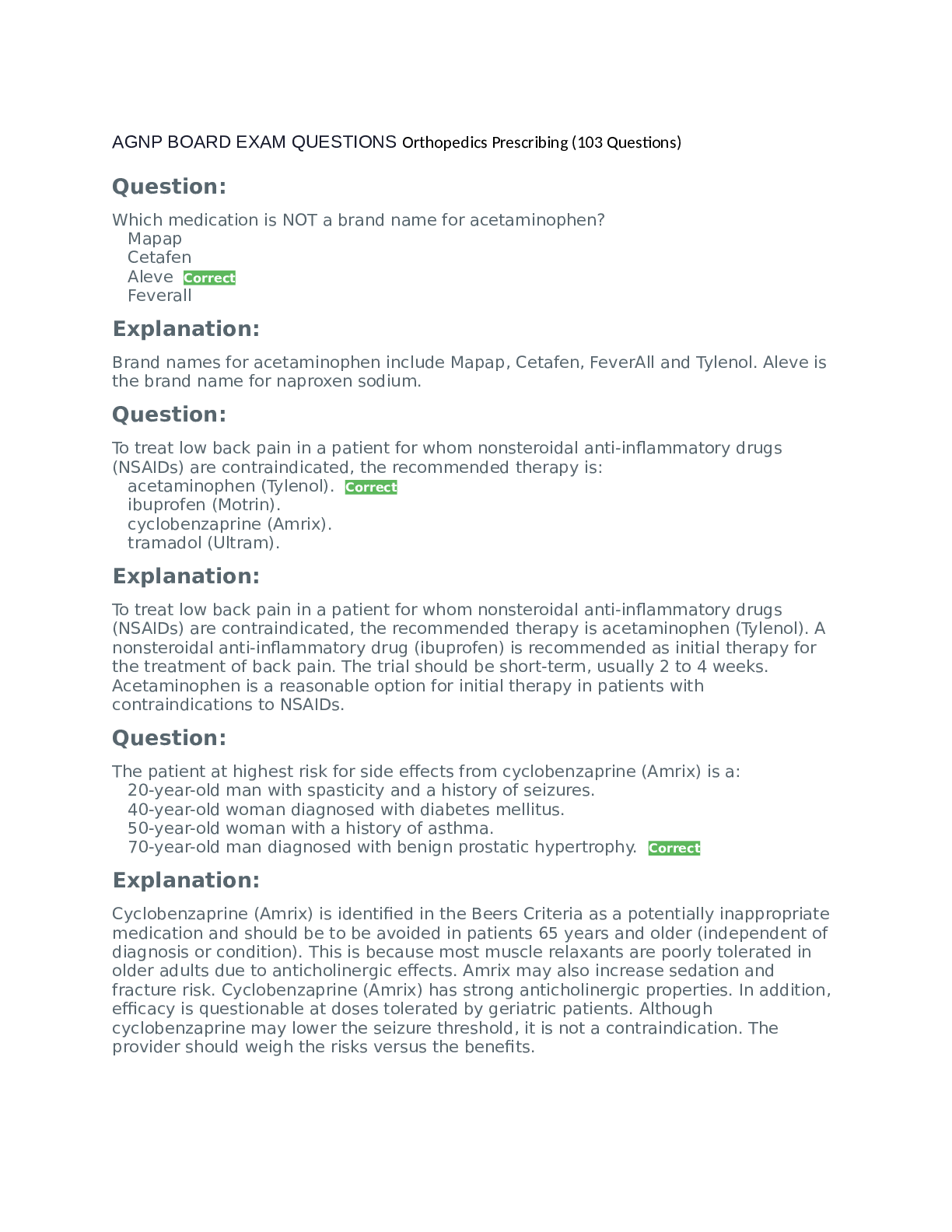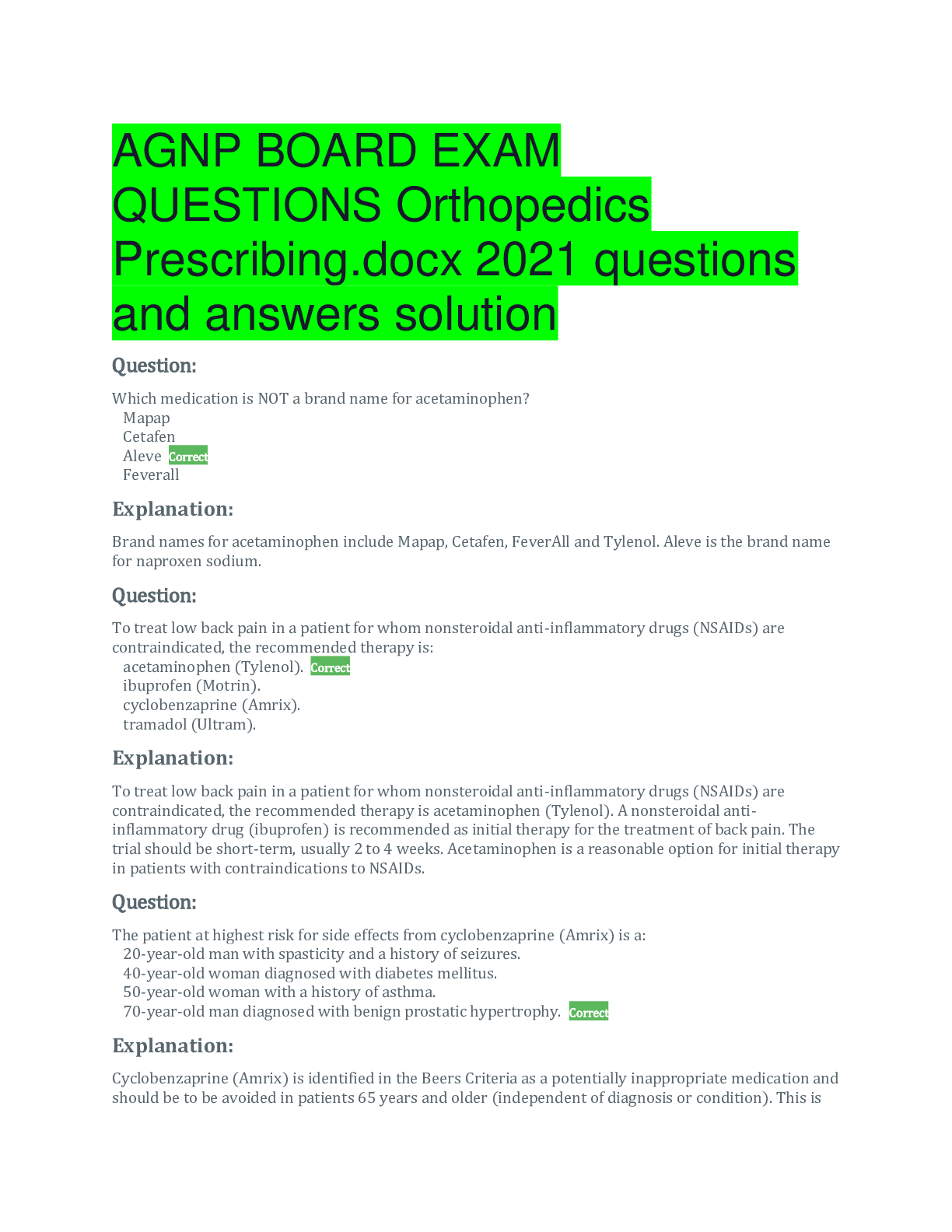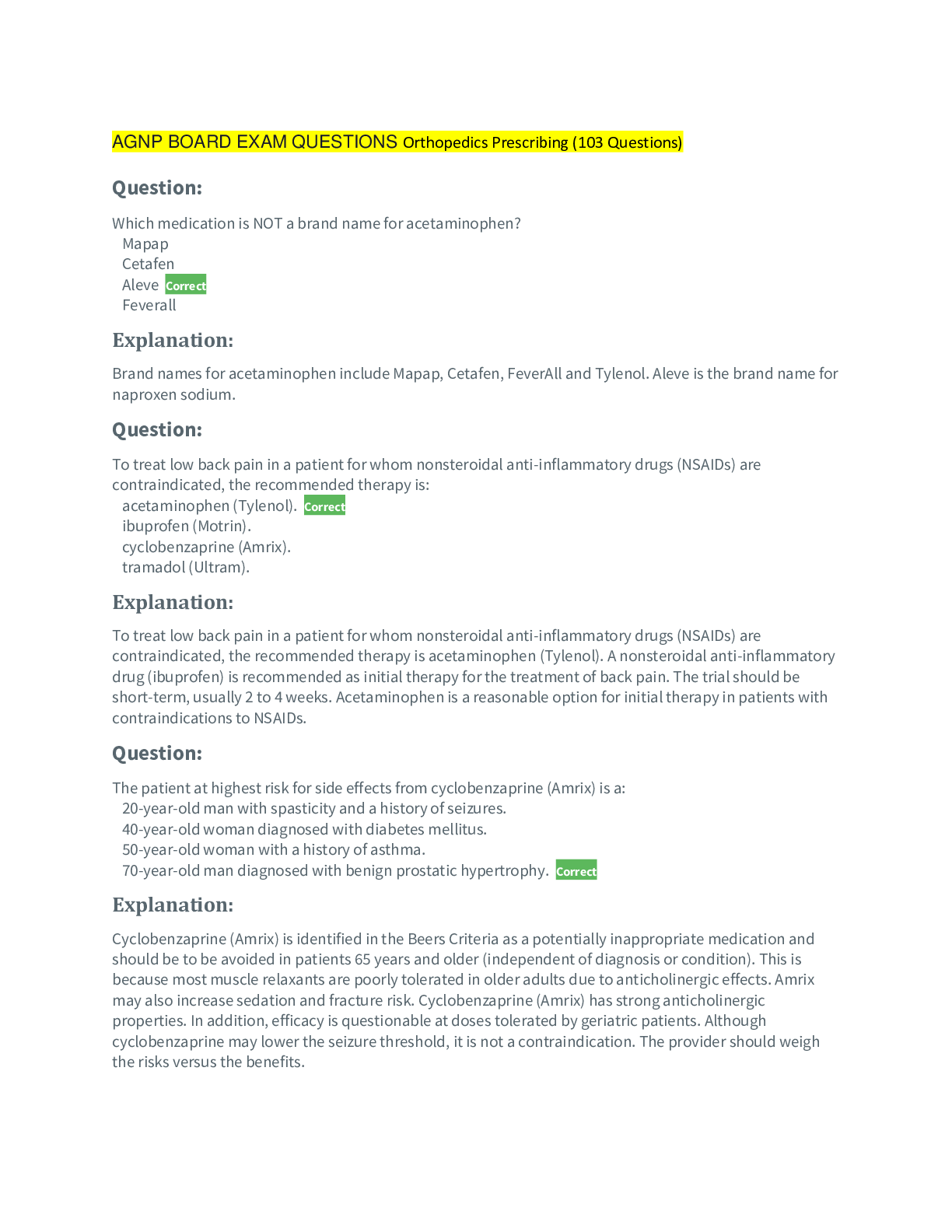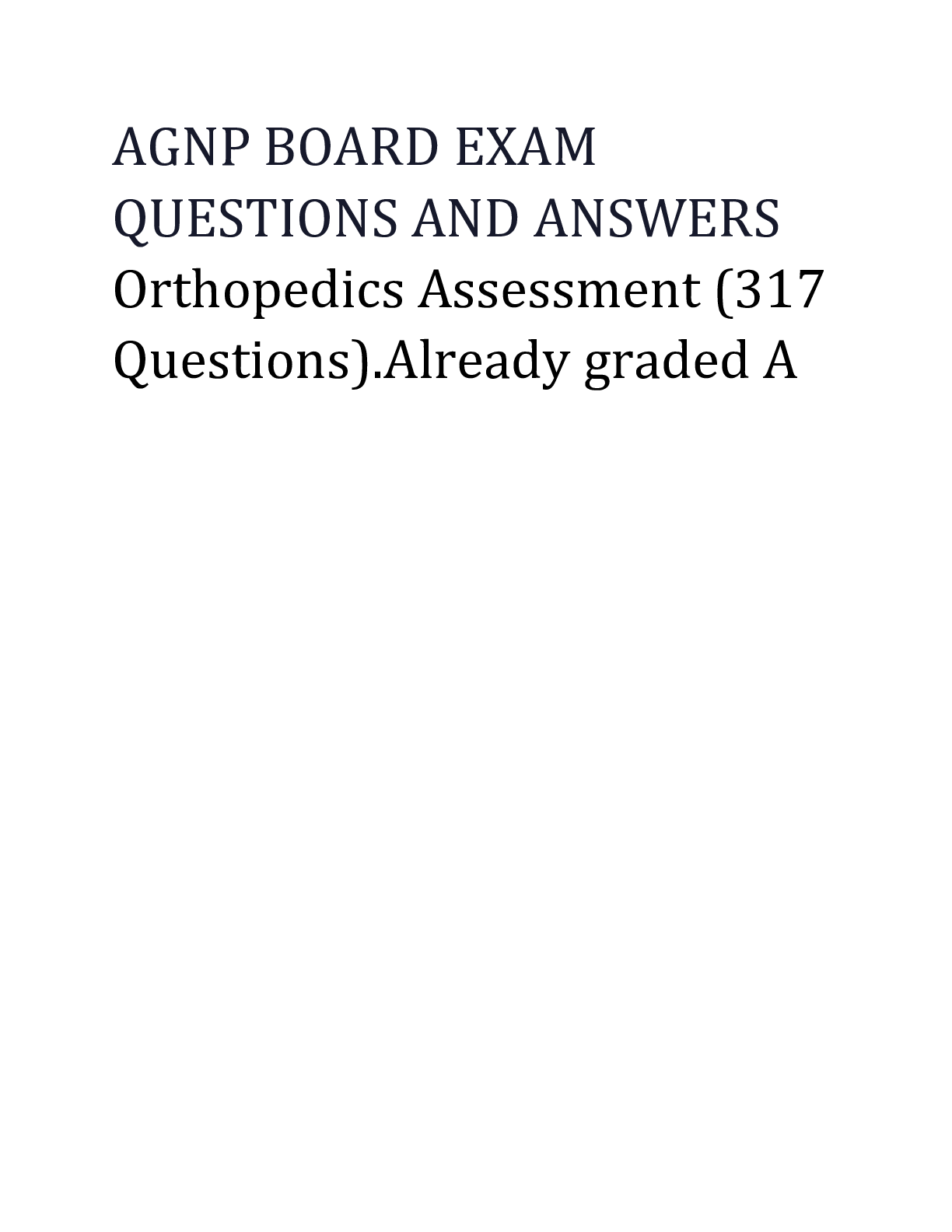*NURSING > EXAM > AGNP BOARD EXAM QUESTIONS Orthopedics Assessment (317 Questions and Answers) (All)
AGNP BOARD EXAM QUESTIONS Orthopedics Assessment (317 Questions and Answers)
Document Content and Description Below
AGNP BOARD EXAM QUESTIONS Orthopedics Assessment (317 Questions and Answers) Question: The axioscapular group of muscles include which one of the following? Supraspinatus Trapezius Correc... t Subscapularis Pectoralis major Explanation: The axioscapular group attaches the trunk to the scapula and includes the trapezius, rhomboids, serratus anterior, and levator scapulae. The scapulohumeral group of muscles extends from the scapula to the humerus and includes the muscles inserting directly on the humerus. This group includes the supraspinatus, infraspinatus, teres minor, and subscapularis. The axiohumeral muscle group attaches the trunk to the humerus and includes the pectoralis major and minor, and the latissimus dorsi. Question: An example of a cartilaginous joint would be the: vertebral bodies of the spine. Correct skull. shoulder. knee. Explanation: Vertebral bodies of the spine and the pubic symphysis of the pelvis are examples of cartilaginous joints. Examples of synovial joints include the shoulder, knee, hip, wrist, distal radioulnar, elbow, and carpals. The skull is an example of the fibrous joint. Question: The part of the ulna that forms the outer prominence of the elbow is referred to as the: olecranon bursa. olecranon fossa. olecranon process. Correct olecranon. Explanation: The part of the ulna that forms the outer prominence of the elbow is referred to as the olecranon process. This process fits into the fossa of the humerus when the arm is extended. Question: To assess muscle tone in the legs, support the patient's thigh with one hand, grasp the foot with the other, and: extend the patient's feet. flex and extend the patient's knee and ankle on each side. Correct have the patient try to lift the foot. feel for jerkiness in the calf. Explanation: To assess muscle tone in the legs, support the patient's thigh with one hand, grasp the foot with the other, and flex and extend the patient's knee and ankle on each side noting for any resistance to the movements. Question: When grading muscle strength, a grade of three would indicate: no muscular contraction detected. barely detectable trace of contraction. active movement of the body part with gravity eliminated. active movement against gravity. Correct Explanation: A grade of three would indicate active movement against gravity. Zero muscular strength would indicate no muscular contraction was noted on exam. A grade of one indicates a barely detectable trace of contraction noted on exam. For active movement of the body part with gravity eliminated, a grade of two would be noted. Question: Joints in which bones have intervening layers of fibrous tissue or cartilage holding the bones together are referred to as: cartilaginous joints. synovial joints. fibrous joints. Correct extra-articular joints. Explanation: Fibrous joints, such as the sutures of the skull, have intervening layers of fibrous tissue or cartilage holding the bones together. The bones are almost in direct contact and do not allow movement. Cartilaginous joints, such as those between vertebrae and the symphysis pubis, are slightly movable. In these joints, fibrocartilaginous discs separate the bony surfaces. Joints in which bones do not touch each other, and the joint articulations are freely moveable (within the limits surrounding ligaments) are called synovial joints. Extra-articular refers to the structures of selected regions of the joint and types of movement. Question: Passive flexion, varus stress, and external rotation of the lower leg evaluates the: medial meniscus. Correct lateral meniscus. lateral collateral ligament (LCL). posterior cruciate ligament (PCL). Explanation: Passive flexion, varus stress, and external rotation of the lower leg evaluates the medial meniscus. Question: When examining the knee, the presence of a palpable fluid wave with the returning fluid wave into the suprapatellar pouch is noted. This positive sign for effusion of the knee is known as the: balloon sign. Correct bulge sign. balloting sign. McMurray's sign. Explanation: A positive balloon sign for effusion in the knee is the presence of a palpable fluid wave with a returning fluid wave into suprapatellar pouch. When examining the knee, a fluid wave on the medial side between the patella and the femur is noted. This positive sign for effusion is known as the bulge sign. Balloting of the patella is tested by compressing the suprapatellar pouch and pushing the patella sharply against the femur. If fluid returns to the suprapatellar pouch, then an effusion of the knee is diagnosed. McMurray's test checks for tears in the medial meniscus. Question: The Abduction (or Valgus) Stress Test is a maneuver used to assess the function of the: Achilles tendon. medial meniscus. medial collateral ligament (MCL). Correct lateral collateral ligament (LCL). Explanation: The Abduction (or Valgus) Stress Test is a maneuver that evaluates the function of the medial collateral ligament. To perform this test, place the knee in thirty degrees of flexion. While stabilizing the knee, abduct the ankle. If the knee joint abducts greater than the uninjured knee, the test is positive. This is suggestive of a medical collateral ligament tear. Question: The dorsiflexors muscles in the foot include the: posterior tibial muscle. gastrocnemius. toe flexors. toe extensors. Correct Explanation: The dorsiflexors in the foot include the anterior tibial muscles and the toe extensors. ..............Continued [Show More]
Last updated: 1 year ago
Preview 1 out of 95 pages
Instant download
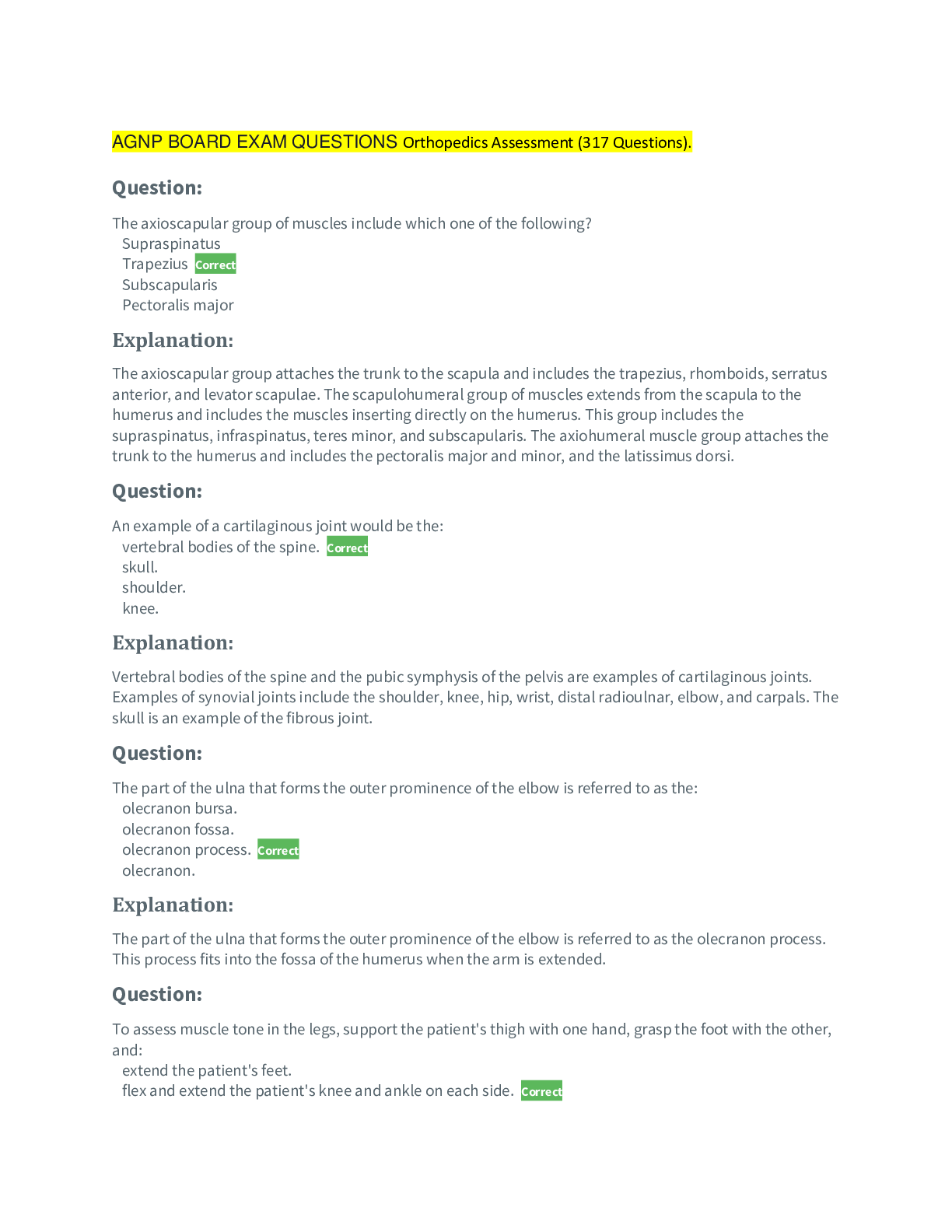
Buy this document to get the full access instantly
Instant Download Access after purchase
Add to cartInstant download
Also available in bundle (1)
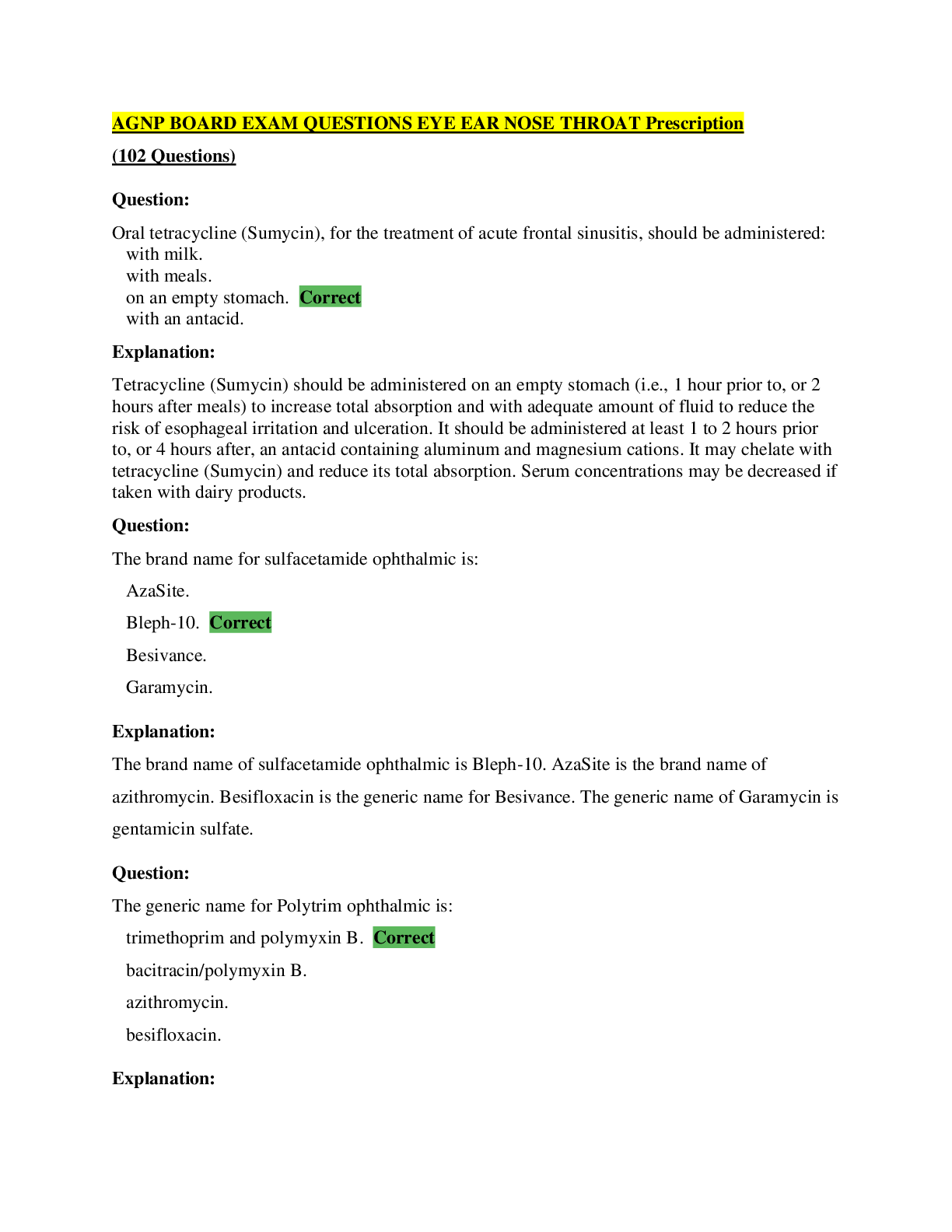
AGNP BOARD EXAMS (23 Different Versions) ; Questions and Answers
AGNP BOARD EXAMS (23 Different Versions) ; Questions and Answers
By YourTutor 3 years ago
$95.5
23
Reviews( 0 )
Document information
Connected school, study & course
About the document
Uploaded On
Feb 01, 2021
Number of pages
95
Written in
Additional information
This document has been written for:
Uploaded
Feb 01, 2021
Downloads
0
Views
56

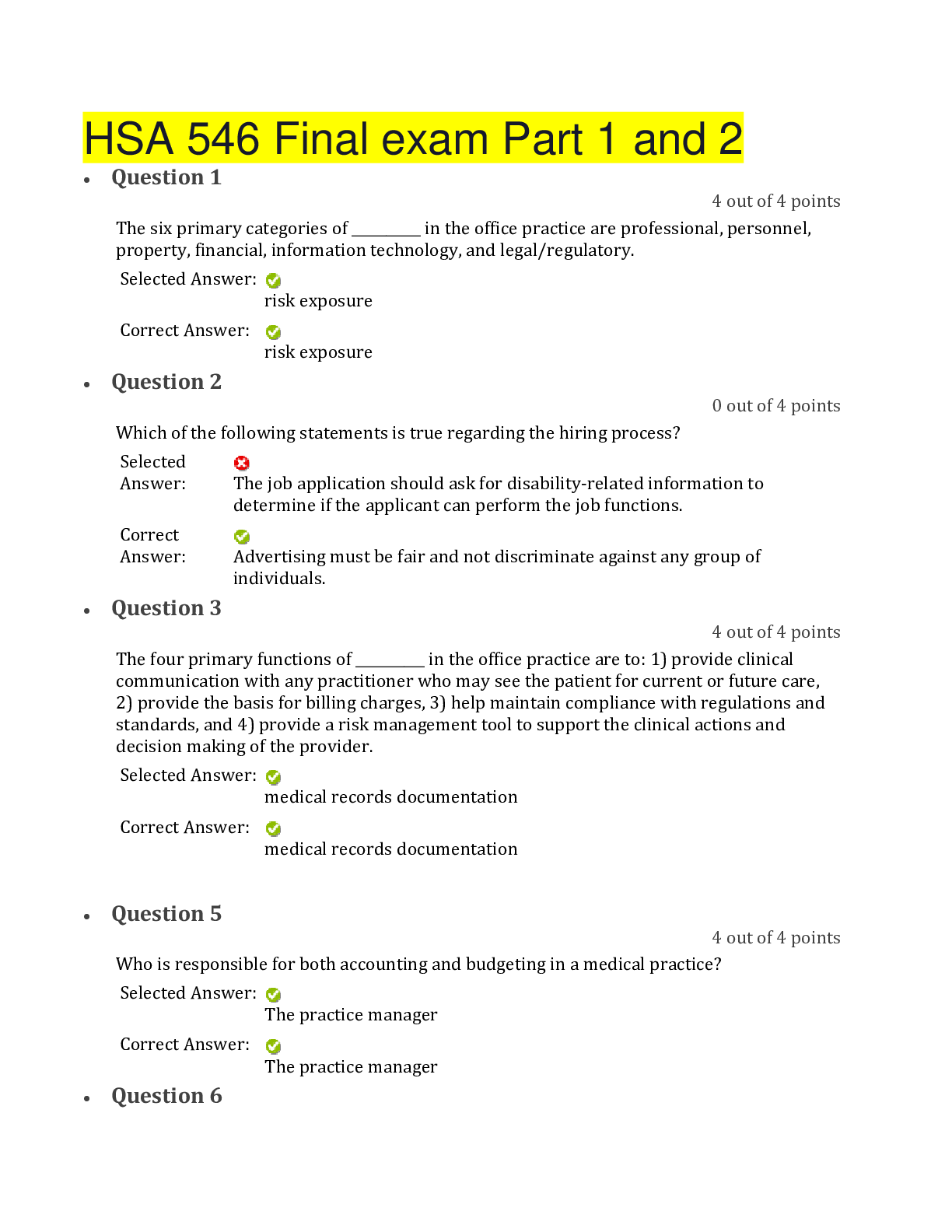


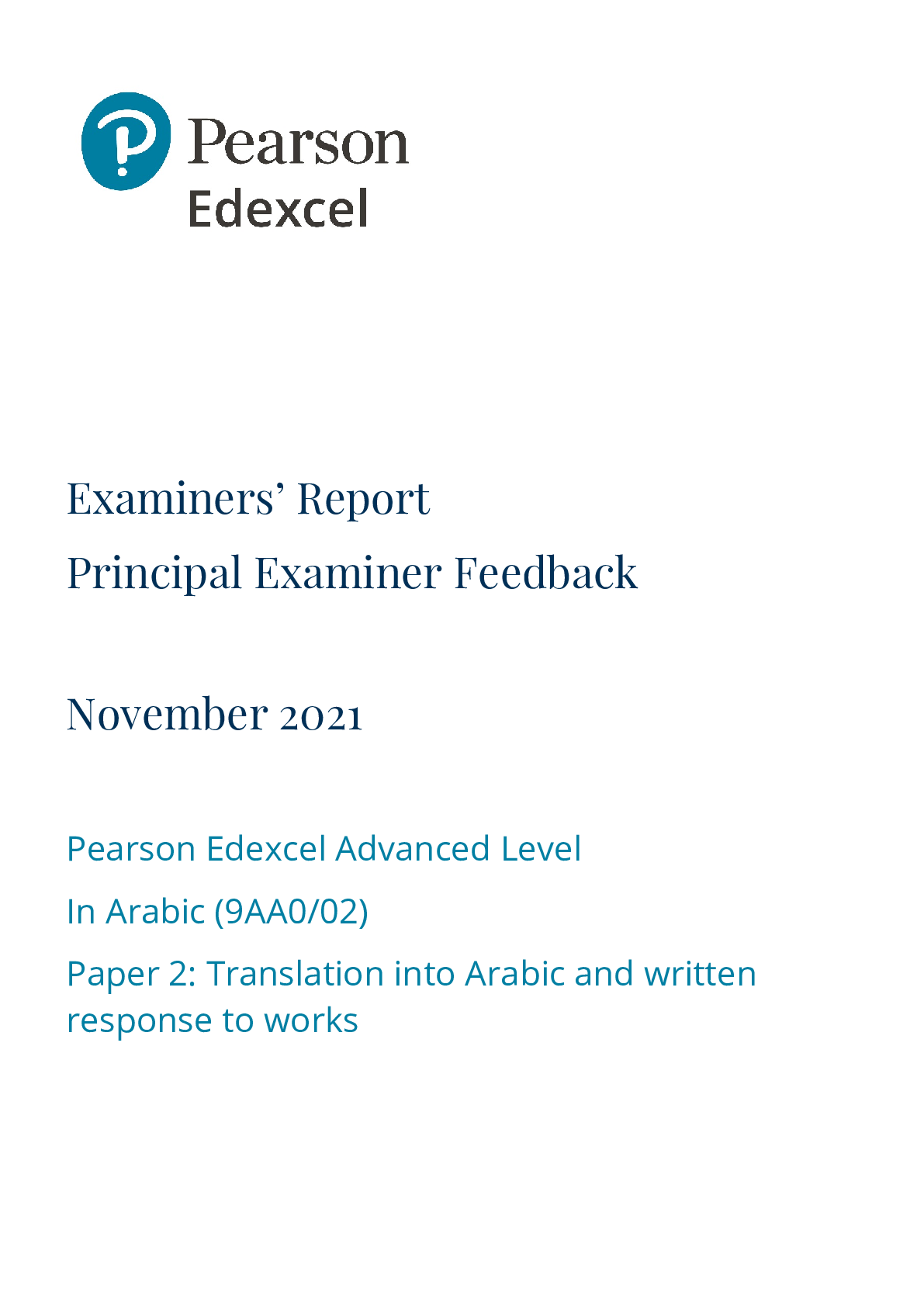
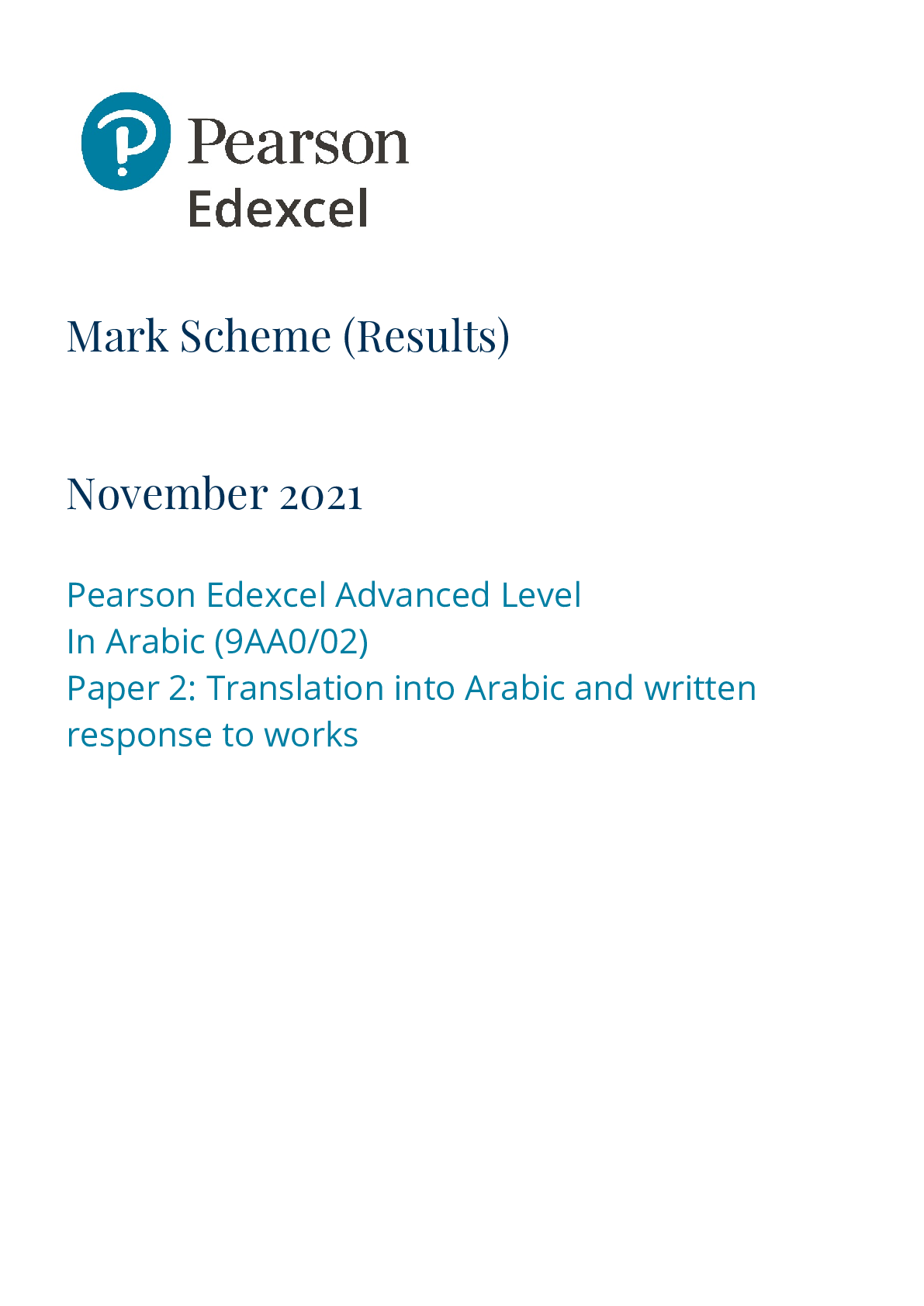
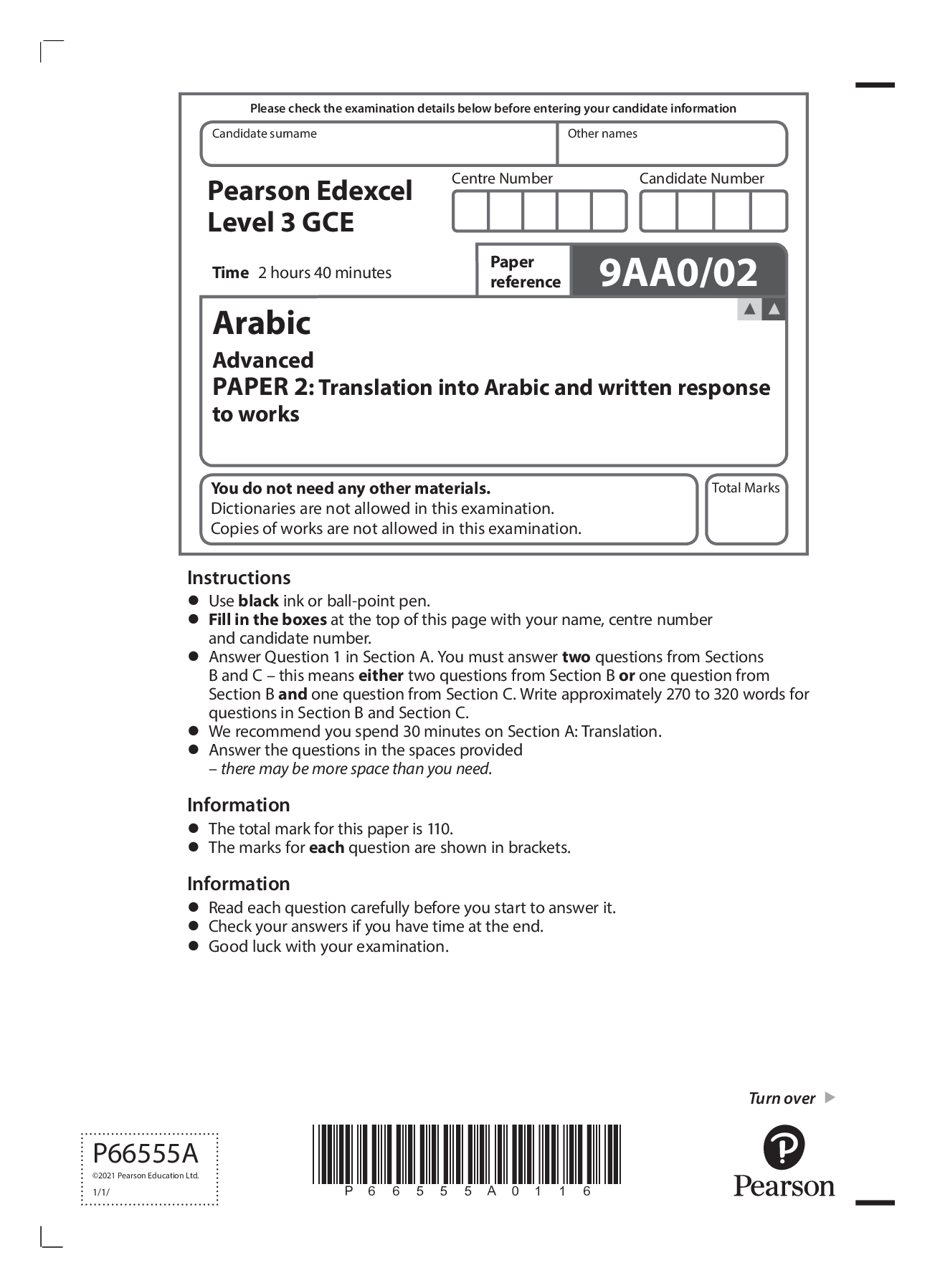
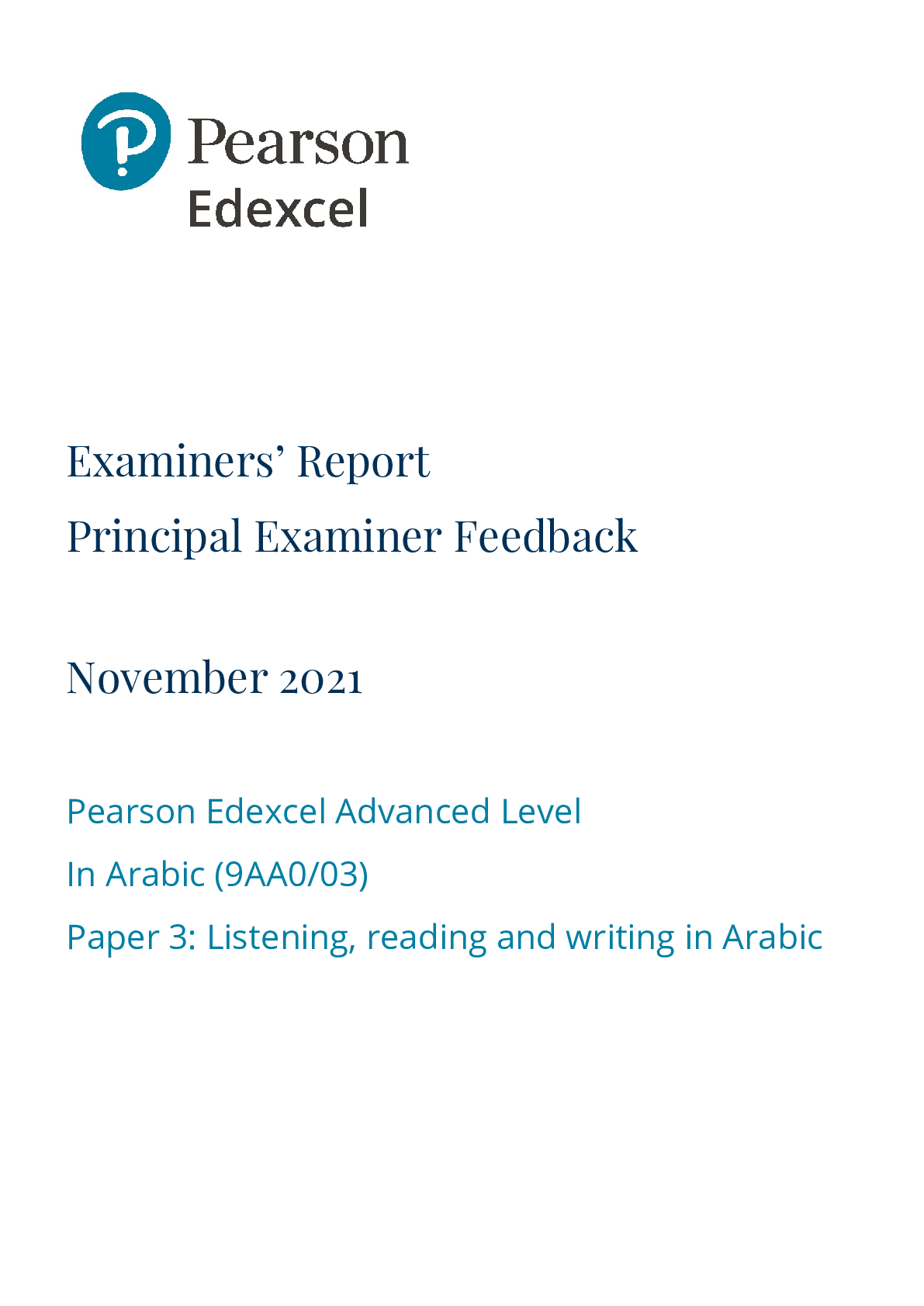
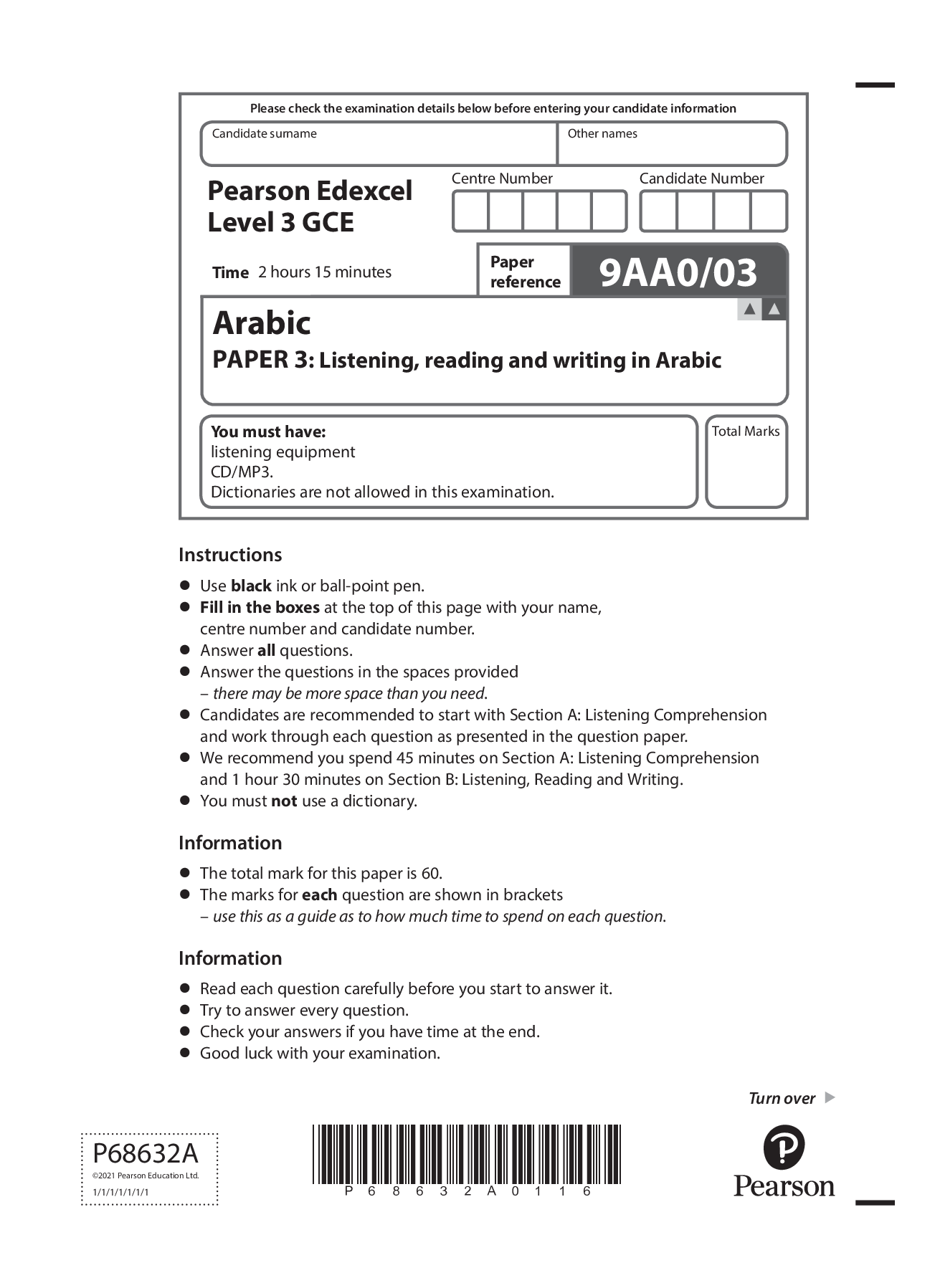
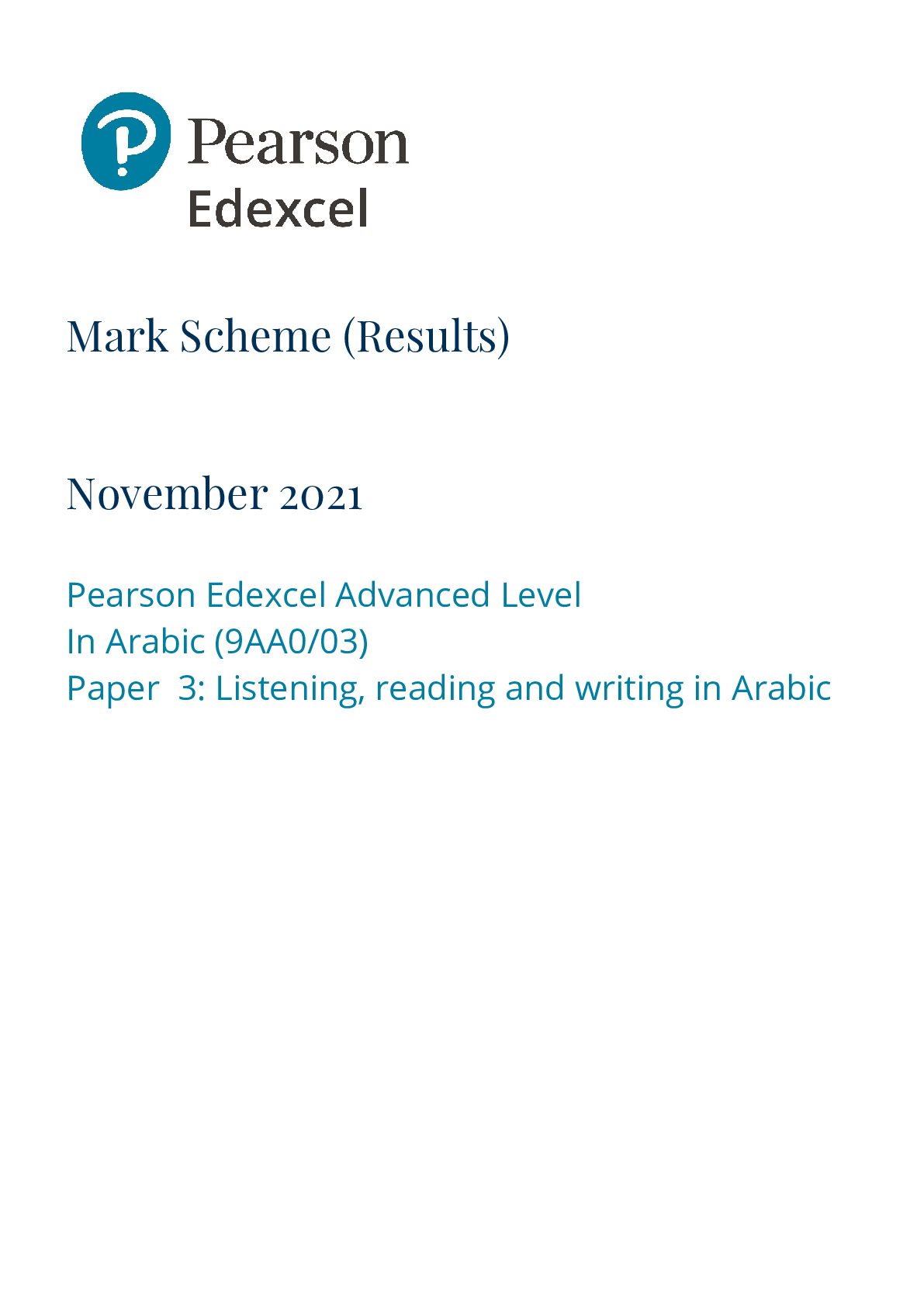
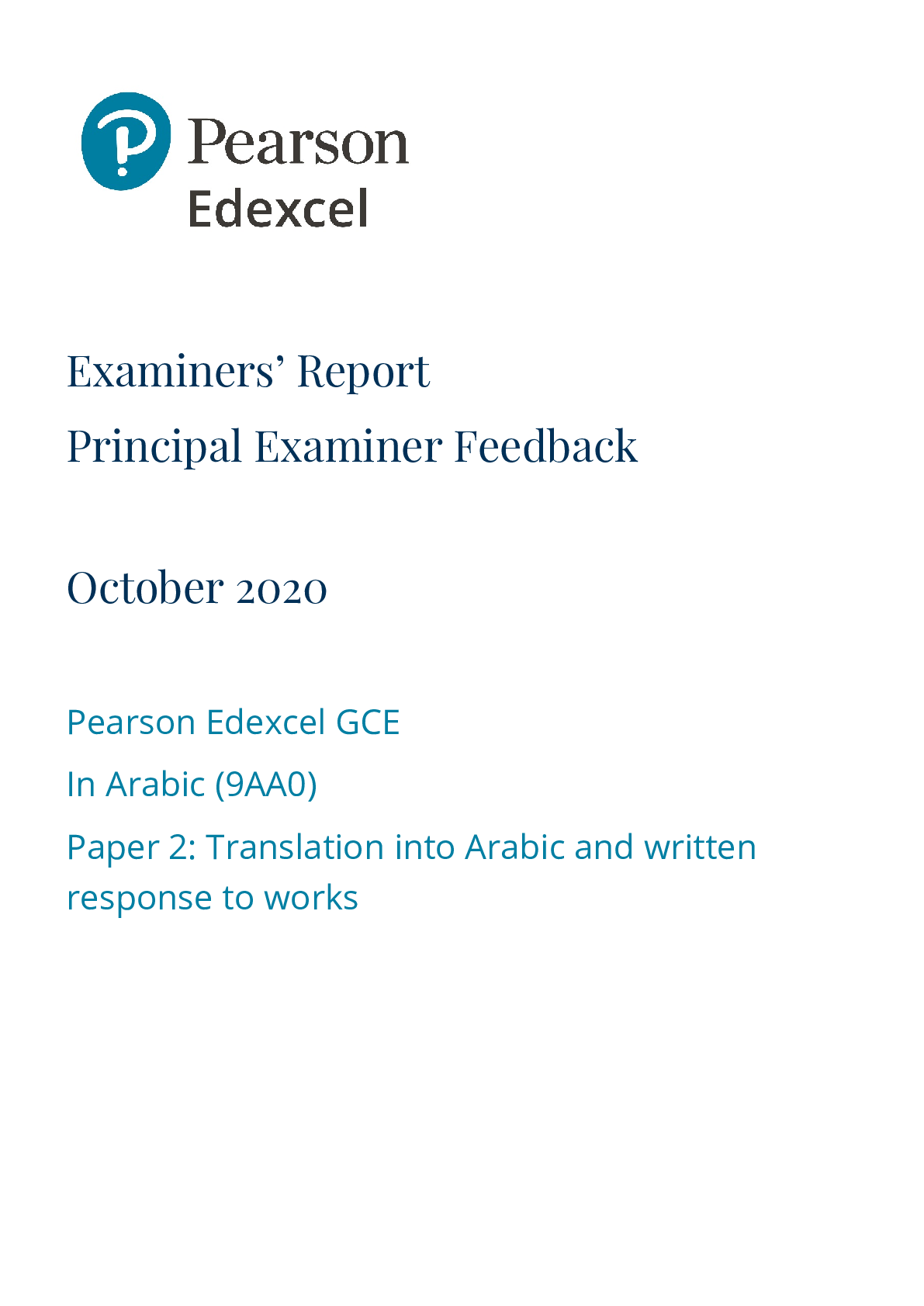

 Orthopedics Assessment (317 Questions) – South University Savannah.png)
